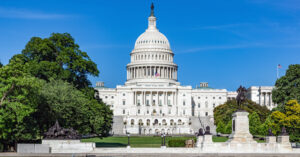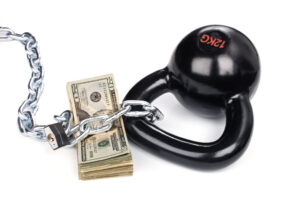
The best way to save for the future has always been through using tax-advantaged retirement accounts. Over the years, the U.S. government has made it easier for individuals to save for retirement through different laws and regulations. A new version of the Setting Every Community Up for Retirement Enhancement Act — otherwise known as the SECURE Act — made its way through Congress. Laws within the new “SECURE Act 2.0” changed retirement savings in many positive ways.
These changes will play a role in self-directed IRAs (SDIRAs), the vehicle which individuals can use to invest in a Bitcoin IRA and other Digital Asset IRAs. Let’s look at some of the SECURE Act 2.0 changes and how they could affect your Digital IRA.
SECURE Act 2.0: Reshaping American Retirements
Required Minimum Distributions (RMDs)
RMDs were instituted so that retirees couldn’t continue to optimize their retirement savings through the later stages of life. Therefore, the IRS requires individuals to take RMDs dependent on their current age, average life expectancy, and retirement account balance.
Current Regulation:
The first SECURE Act in 2019 increased the minimum age for RMDs to 72 years old. The penalty for failing to take RMDs is a 50% tax on the RMD amount. And while RMDs were waived in 2020 due to the coronavirus pandemic, the RMD policy has been reinstated and anyone age 72 or older as of December 31, 2021, will need to take their RMDs.
Updates Under SECURE Act 2.0:
Individuals could now wait until age 73 to start taking RMDs without taking any penalty. This age would increase over the coming years to 74 by 2029 and 75 in 2032. The proposal also suggests eliminating RMDs altogether for those who have less than $100,000 in aggregate retirement savings.
If a qualified individual fails to take RMDs as necessitated by the law, the penalty is reduced from 50% to 25% of the RMD amount.
What it Means for SDIRAs/Digital IRAs:
As a new asset class, investors should be thrilled that they can leave their digital assets in their SDIRA for longer without being required to take distributions. Doing so gives retirees more time for earnings growth on their digital asset holdings.
Increase to “catch-up” contribution limits (the “super” catch-up)
Catch-up contributions allows people aged 50 or older to increase their contribution to retirement savings above the standard allowable limit. This was first enacted in 2001 as part of the Economic Growth and Tax Relief Reconciliation Act and helps older workers save more for their impending retirement years.
Current Regulation:
Catch-up contribution limits are dependent on the type of retirement account being used (for the 2021 tax year):
- Traditional/Roth IRA – $1,000 additional (total of $7,000)
- SIMPLE IRA – $3,000 additional
- 401k and 403b – $6,500 additional
Updates Under SECURE Act 2.0:
Effective January 1, 2025, individuals aged 60-63 can make their super catch-up contributions of up to $11,250 to their retirement plans, an increase from the previous $7,500 limit for those aged 50 and above.
What it Means for SDIRAs/Digital IRAs:
The increase in catch-up contributions could lead to more capital for SDIRA accounts. This would allow individuals to invest more capital-gains-tax-free into bitcoin, your Ethereum IRA and other cryptocurrencies as you choose.
New options to contribute after-tax income into a Roth account
Roth IRA contributions are made after-tax, meaning they are not tax-deductible. However, this also means that any earnings on those contributions are tax-free. This can be a great way to save for retirement for investors.
Current Regulation:
Roth IRA options — which allow for after-tax contributions to a retirement account — are not available for SEP and SIMPLE retirement plans.
SECURE Act 2.0 updates:
Savers are now able to make after-tax contributions in both SEP and SIMPLE retirement plans, giving individuals Roth investment options in both cases. Employers could also opt for matching contributions within these Roth accounts.
What it Means for SDIRAs/Digital IRAs:
More after-tax contributions mean more tax-free savings growth for investors. And while SEP and SIMPLE retirement plans don’t allow for digital asset investments, these plans can be rolled over into an SDIRA for digital assets without any tax or penalties.
Automatic Enrollment and Tax Incentives
The government has always made it clear that IRAs and other retirement accounts are the best way to save for retirement. Unfortunately, many people that could benefit from these plans simply don’t opt in.
Current Regulation:
Employees have the option to opt into their employers’ retirement plans. Small companies — with less than 50 employees — are given a 50% tax credit in relation to the startup costs for their employees’ retirement plans.
Proposed Regulation Under SECURE Act 2.0:
If eligible, employees are automatically enrolled into their employer’s 401k, 403b, or SIMPLE IRA plan at 3% of their current salary (starting in January 2025). This amount would increase by 1% each year all the way up to 10%. To help offset the added costs for employers, the government would give an added tax incentive to small businesses. Businesses with less than 50 employees would be refunded up to 100% of all associated startup costs for instituting these retirement plans. Learn more here.
What it Means for SDIRAs/Digital IRAs:
The automatic enrollment initiative would get more individuals saving for retirement. Believe it or not, default behavior is a powerful force! Simply requiring employees to opt out rather than forcing them to opt in virtually guarantees massively increased participation. More retirement saving means more capital invested, which inevitably pushes asset prices up. Of course, all these assets are eligible for rollover… These retirement savings could be moved into a Digital IRA in no time.
Remove 25% Cap on QLACs
Qualified longevity annuity contracts — or QLACs — are a way for retirees to gain a steady income stream through the remaining years of life. This deferred annuity allows investors to decide when they want to start receiving their income payments and is a good safety net for a retiree’s sunset years.
Current Regulation:
The U.S. government put a limit on QLAC contributions which amount to $135,000 or 25% of retirement savings, whichever is smaller. There are also limitations on what types of investments are available for annuities.
Proposed Regulation Under SECURE Act 2.0:
The SECURE Act 2.0 gets rid of the 25% limit on QLAC contributions and put in a fixed limit of $200,000. This increases the allowable amount for QLACs across the board. At the same time, the intention is to widen the array of investment options for such annuity contracts to include exchange-traded funds (ETFs).
What it Means for SDIRAs/Digital IRAs:
This change wouldn’t have a whole lot of implications for Digital IRAs directly as QLAC contributions are still limited in the types of investments allowed. Still, increasing the allowable limit on QLACs would offer individuals with more of a predictable stream of income later in life, thus allowing them the opportunity to invest in other areas, like digital assets, with their SDIRA accounts.
Employer Matching Contributions for Those Paying Student Loans
Employer matching programs are one of the best ways to get free money for employees. The more an employee saves for retirement, the more their employer adds to that savings through the matching funds. Yet, so many employees are weighed down by student debt that they can’t afford to save for retirement in the first place, eliminating the opportunity to receive matching funds.
Current Regulation:
Employers have the option, but not the obligation, to match a portion of their employees’ contribution to a 401k or other retirement plan. However, if the employee does not contribute to the plan directly, there is no ability for the employer to provide matching funds.
Proposed Regulation Under SECURE Act 2.0: Employees still paying off student loans would be able to benefit from employer matching programs even if they aren’t contributing to their retirement plan directly. Employers could make matching retirement plan payments based on the amount of student loan debt being paid by the employee.
Employees still paying off student loans would be able to benefit from employer matching programs even if they aren’t contributing to their retirement plan directly. Employers could make matching retirement plan payments based on the amount of student loan debt being paid by the employee.
What it Means for SDIRAs/Digital IRAs:
Expanding matching payments means more money in the retirement accounts of employees. It’s simple math: More money plus more time to earn tax-free within a Digital IRA means more opportunity for wealth generation within those retirement accounts.
What Comes Next?
As you can see, the SECURE Act 2.0 revamps regulations for individual retirement planning in many ways. Most of these provide huge benefits to employees and savers, too.
The SECURE Act 2.0 is now the law of the land… Learn more about what it means for you here.
